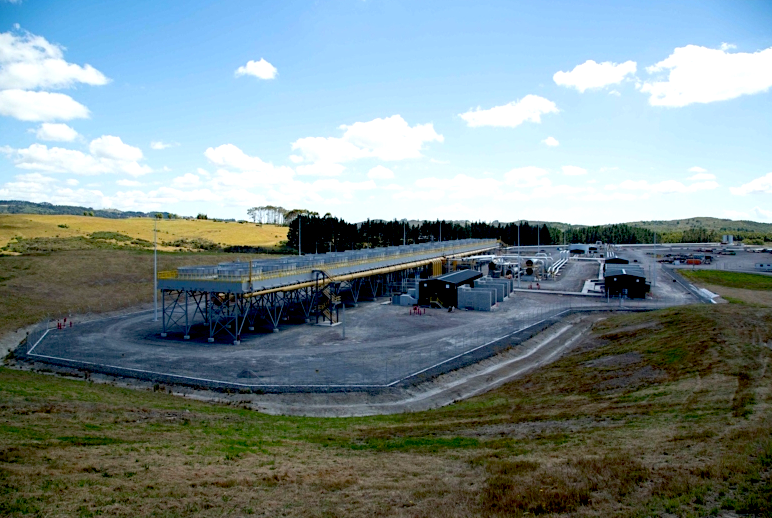
The team at Ngawha has successfully reduced emissions from the power plant equivalent to 128,000 tons of CO2 equivalent to only about 28,000 tons. By the end of the year, the goal will be to reduce this number to zero.
With Ngawha on the path to being carbon-zero, Top Energy has also managed to reduce their line prices by a third while maintaining capacity in the network to serve the power needs of the Far North district of New Zealand.
High CO2 levels a threat to Ngawha
The Ngawha geothermal field is the only high-temperature geothermal field in New Zealand located outside the Taupo Volcanic Zone. The geothermal power station in Ngawha has been operating since 1998 and has been expanded several times, the latest of which was the 32-MW Unit 3 which started commercial operations in 2021.
The NCG content of the geothermal fluids in Ngawha is relatively high at around 22% when the field first started operating. There also almost no surface features in Ngawha where natural degassing over time can occur.
This has resulted in high carbon emission from the Ngawha geothermal power plant. Aside from its environmental implications, the high carbon emissions also meant that Ngawha Generation had to pay a high amount of carbon tax to the government under the New Zealand Emissions Trading Scheme. With roughly 30% of the revenue being paid as carbon tax, the high carbon emissions of the power plant impacted the ability of Ngawha Generation to reduce the cost of electricity to consumers.
The Ngawha Carbon Zero Project was then initiated to help meet the sustainability goals of Top Energy. Russel Shaw, Chief Executive of Top Energy Group, however admits that the Interim Climate Change Report published in 2021 also provided motivation for the project. The report implied that the high CO2 emission levels of the Ngawha geothermal power plant can be cause for it to be shut down.
“The ongoing costs of carbon emission tax was a real threat to the ongoing operation of Ngawha. It was clear that we had to do something very, very quickly and urgently,” remarked Fabian Nahik, Assistant Plant Manager at Ngawha Generation
Lessons from Hawaii
The solution to the problem of Ngawha came all the way from the Puna geothermal power station in Hawaii. In Puna, Ormat has been reinjecting NCG at the geothermal power for over 20 years. The reason for doing this in Hawaii is so that the nearby communities do not become bothered by the unpleasant smell of hydrogen sulfide gases.
“Ormat provided us access to the IP that they developed at Puna and that allowed our engineers to develop our techniques, complete the designs, and test that we had no adverse effects on the geothermal field,” recounted Shaw.
The fact that all the power stations in Ngawha run on binary technology helped make the project much simpler. This meant that all the gases were still confined within the pipes, making it easier to design a system for reinjecting them back into the brine.
Cheaper and easier than expected
“It was surprising how little we impacted the overall operation. We assumed that it was far more complicated to get to 100% reinjection of the NCG gas,” said Nahik.
The system injected gas into the suction side of a centrifugal pump. Experiments were made on existing tapping points for gas reinjection, which made the team realize that this was a simple problem that can be solved with minimal capital expenditure.
Shaw said that Top Energy had budgeted $6 million dollars for the project, but the project team delivered it at only “a couple of hundred thousand dollars.”
Trusting people on the ground
Support from the management of Top Energy played a pivotal role in helping the project team of Ngawha Generation explore new technologies and experiment on the field while maintaining safe practices. The team was given the flexibility to look at what was possible and come up with the best engineering solutions.
The success of the Ngawha Carbon Zero Project was not attributed to a top-down approach to problem solving. Instead, it involved people on the ground identifying the problem and coming up with solutions.
“If New Zealand really wanted to tackle this climate change initiative, we need to stop being so scared of just giving things a go or staying within the regulations, but trusting people on the ground and to help and guide them through that process,” emphasized Nahik.